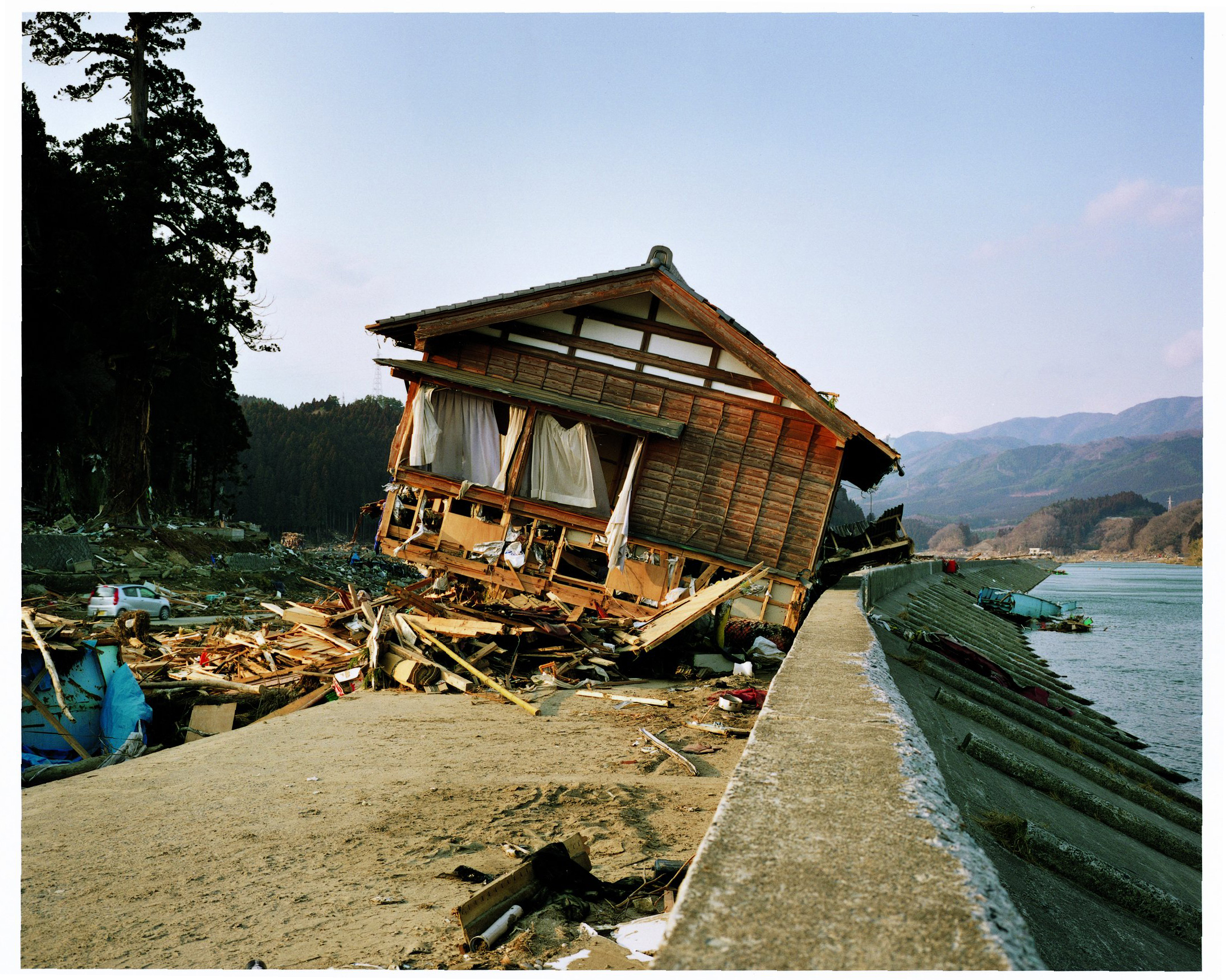At a symposium on "Trauma and Utopia" held in Tokyo in October 2014, photographer Naoya Hatakeyama talked about his work in the aftermath of the 2011 Great East Japan Earthquake and tsunami, a disaster that killed his mother and destroyed his home in Rikuzentakata, Iwate Prefecture. During this, he acknowledged that the 2004 Indian Ocean earthquake and tsunami had taken 230,000 lives, more than 10 times as many as were taken as a result of 3/11, and yet these victims were not in the public consciousness in the same way as the Japanese disaster, nominally because the Japanese mass media were adept at keeping the memory of 3/11 alive. This was rather clumsily translated by the interpreter as being a sign of the admiration of Japanese culture around the world and the "powerful" Japanese media, rather than the more ambivalent point that Hatakeyama was expressing about the obscurity into which the lives of nearly a quarter of a million people had disappeared.
In Japan, we are reminded almost daily about the 3/11 disaster by the mainstream media. The frequency, quality and tone of these reports is a hugely problematic issue for anyone who wishes to distinguish between national identity and natural disaster. This is the topic of Gennifer S. Weisenfeld's historical, but wholly relevant book "Imaging Disaster: Tokyo and the Visual Culture of Japan's Great Earthquake of 1923," which acts as an incisive reminder that our reactions to trauma are configured by society and politics.
This is one issue among many when it comes to analyzing photo books that have 3/11 as their subject. Another is that the variety of publications means we are obliged to view the event in categorically different ways — photographs can be collections of anything from camera phone snapshots to expensive large-format prints.

















With your current subscription plan you can comment on stories. However, before writing your first comment, please create a display name in the Profile section of your subscriber account page.